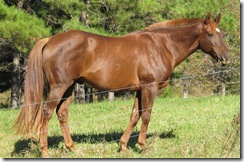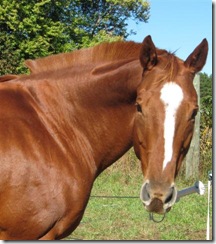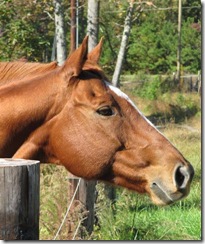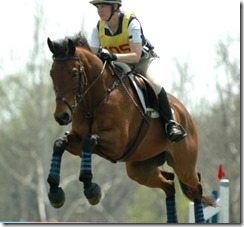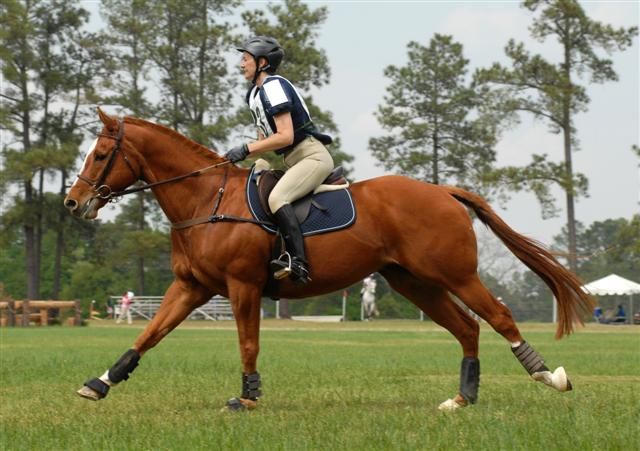*Disclaimer: you can thank insomnia for this one...and hold it responsible for any level of insanity*
That’s right, horse owners & consumers, YOU, are being lied to.
By a myriad of companies who’ve hired scores of marketers with the primary goal, naturally, of maximizing profit, as a proper business should (
one of many reasons I work in the still-flawed, but significantly different section of the public sector I do).
I know, fetch your smelling salts & contain your tears of shock: an advertiser LIED to you? Say it isn’t so…
*do we have a sarcastic font yet?*
Oooo, Oooo, Who's In Trouble?
 |
| So inconvenient... |
No names. And certainly not a blanket indictment of all. Just basic science & physiological realities that, er, clash with some not-so-realistic ad copy. Anecdotes, psychosomatic responses, & non-causative results all create bias in our conclusions every day, even if only subconsciously.
Science exists to investigate WITHOUT bias, preferably in a standardized & repeatable fashion, & then to inform & educate.
GOOD science, though, stands out from its slimier cousin (
in our business, the latter is named ‘The Biostitute’): it is unafraid to say, “I was wrong. Let’s re-examine…”
Which is a perfect place to add: if I do mis-speak (
it could happen…in theory…or even *gasp* reality), I absolutely welcome further education!!
So many haystacks, where to begin?
How About Hydration?
Here’s a concept whose basics are easily grasped by most sentient adults. The simple requirement of a mammal
(in the instance of our beloved money pits) to somehow replace water lost through sweat/evaporation & urination
(& your occasional drooler). What goes out, must come in. Fail = die.
Seems a clearcut equation, made even easier by the fact that for most purposes, horses only have one “in” port (
we’ll leave out IV fluids) known as the drinking hole, or mouth (
no one likes that feeling when water goes down the air hole…).
Well, according to some manufacturers, we can kiss that limitation goodbye! I can’t decide whether to be aghasted (
thank you, COTH) by their clear ignorance or disregard of 8th grade science, or impressed by their sheer audacity in assuming their clientele is either incredibly gullible or incredibly uneducated.
 |
| Solo wears the decidedly NOT majykal |
The Majykal Hydrating Fabric
One fabric, when sewn into the shape of a $9 ear bonnet, claims to “increase H2O hydration.” (
In this context, is there a type of hydration that DOESN’T involved H2O? Yes, redundancy bothers me. I hate repeating things. See what I did there? Yeah, I crack myself up)
Simultaneously, this mystical fabric is “breathable,” i.e. capable of releasing not only moisture, but “toxins,” as sweat evaporates.
- Commit, oh Majykal Bonnet – you cannot simultaneously inject moisture into Dobbin’s head AND let it out. That’s like trying to hold water in a bucket made out of a basketball net.
- This may surprise you, but horses are not earthworms or amphibians. They cannot absorb water or breathe through their skin. Otherwise they’d drown every time it rained, which would result in a massive increase in turnout sheet prices!
- Mammalian bodies process “toxins” using three large & valuable organs, the liver & two kidneys. There is no skin filtering, sorry, & even if there was, what do you even mean? Are you claiming to suck things out of my horse's head? Filter "horse brain pollutants" before they harm the ozone? What purpose would this imaginary power serve?
Hydration’s Relationship With That Cardiovascular Stuff
Further product
claims of this type assert that a more hydrated horse will have “increased oxygen levels & rate of circulation,” which we are generally programmed into equating with MOAR BETTER HEALING & PERFORMANCE. Alas, while I do envy the marketers’ salary, I cannot let sleeping lies…lie?
 |
| No sweating here, mom, er... |
Performing muscles do require that blood, infused with oxygen by the horse’s massive lungs, is pumped quickly through the body to deliver its precious energy food. In addition, blood heated by a hard-working horse must circulate faster to small blood vessels close to the surface of the skin, so body core temperature does not reach dangerous levels.
At the same time, that blood loses some of its liquid component to sweat: a
minus because this will reduce the volume of blood & increase its viscosity (
thickness,
think cold molasses), but a
plus in that evaporating sweat will help keep that core temperature out of the red zone during exercise.
Two important changes occur here:
- The horse has had a subtraction from his overall fluid levels, thanks to this evaporation (the well-known road to dehydration).
- He also now has thicker blood, which is harder to push through vessels, further complicated by the spleen’s programmed red blood cell (RBC; mixed in stored plasma, just like the glycogen we talked about previously) dump in response to the body’s “HEY! We need some O2 over here!” demand.
When your human spleen takes a dump (
poop jokes never stop being funny), you get about a
10% RBC boost. Dobbin’s spleen, just like his colon, is a mite bigger than yours, so he gets a
50% boost. Which sounds great until you put it under your trusty microscope & discover that
approximately 75% of that dump consists of old, stiff RBCs (
it happens to the best of us).
You guessed it: that bumps blood viscosity even higher. That significant human/equine difference is what makes them more susceptible to rapid-onset dehydration complications. Now you’re stuck in a
negative feedback loop where
the more blood volume muscles & organs demand, the faster that volume is decreased.
So…Is There ANY Connection Between Hydration & Oxygenation?
Let’s go back to those claims about oxygen & circulation. Even if he does snort some water up his nose, the horse still cannot increase oxygen levels in his blood through rehydration. He can only do that by inhalation (
ok for horses, not for US Heads of State, apparently). His heart can only pump so much blood per minute around his lungs & then out to his body. You can’t make his heart volume any larger with water either, nor will it make the organ beat any faster.
Therefore, unless someone’s invented an Equine Camelback so he can take a sip mid-gallop, it is impossible for a horse to regain fluids while he’s working. Even if he could, this would have no impact on the oxygen levels in his blood.
Which bring us to what you already knew:
the critical importance of (a) giving your horse ample opportunities to drink and (b) conditioning him well before asking him to perform at a competition or other maximum level of exertion.
 |
| Iz fit. Bring it. |
Dehydration IS related to reductions in available blood plasma, which occurs in part due to fluid loss. The bucket of clean water is the no-brainer.
Fitness Is More Than Muscle
This is why it is also vital that your training is more thoughtful than 3,000 20-metre circles.
Building your horse’s cardiovascular fitness tends to
- Increase the volume of blood his heart can pump with each beat, so fewer beats are required for performance, which means a lower heart rate at peak exertion.
- He can also build more capillaries within muscles &...
- More mitochondria (read: energy makers in muscle cells), both of which enable more efficient use of received oxygen.
As a result,
you’ve built a horse who can send more oxygen-rich blood through his entire body, with less cardiac strain, & increased energy production efficiency.
Now THAT, my friends, is how it’s done. For the total cost of…$0. I even saved you the effort of Google-typing.
Drinking filter fabric…puh-lease…
 |
| The truth doesn't hurt. For long. |
 Sorry for that bit on the left, the interwebz made me do it...
Sorry for that bit on the left, the interwebz made me do it... 


















.JPG)

















